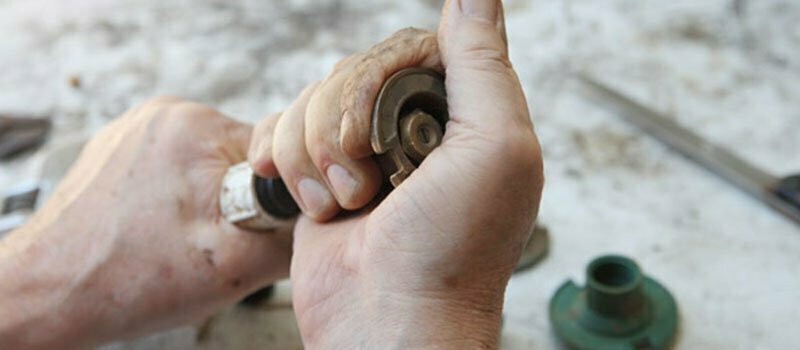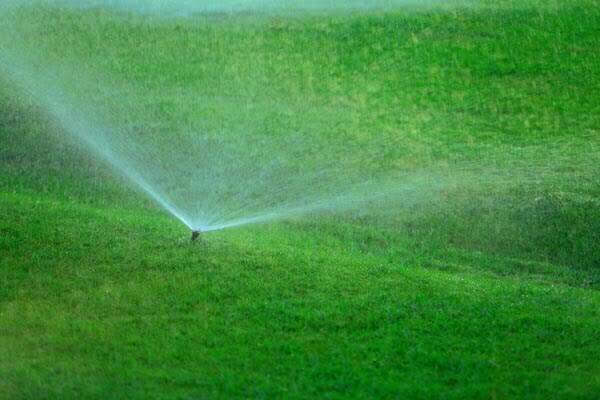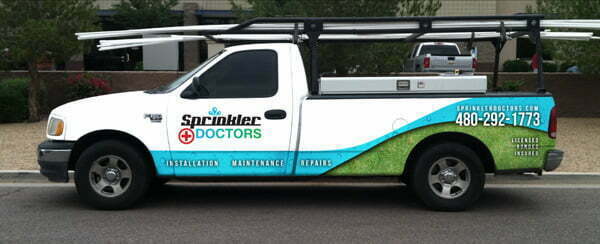Sprinkler Repair Phoenix
Water Wasters: Common Mistakes in Sprinkler and Irrigation Systems
When you invest in an irrigation system, you expect it to work properly. Problems like water hogging, patchy coverage and frustrating equipment breakdowns are supposed to be things of the past. If you’re tackling frequent irrigation headaches, your system likely has issues with its design and installation.
Phoenix’s unforgiving climate makes irrigation issues especially costly for your wallet and damaging to your plants. Luckily, your woes can be soothed an irrigation company specializing in sprinkler repair in the Phoenix area. You can give your system a quick inspection before your appointment to see if you can pinpoint potential problems.
All System Types
- Setting zones too close or far apart. For turf and other ares where you want broad coverage, there is an overlap “sweet spot.” Not too much, but not too little. That way, it doesn’t waste water but prevents dry spots.
- Pipe trenches are too shallow or deep. Shallow pipes will break when too much weight passes on top of them. Deep trenches are too difficult to excavate for repairs.
- Putting different system types on the same timer. Sprayers, rotors, drippers and bubblers all have different flow rates. If you put them all on the same timer, you’ll get uneven watering. Make sure they’ll all on their own schedules.
- No rainwater shutoff. Phoenix may not get much rain, but if your irrigation system is running when it does, you’re losing money. A rainwater shutoff is easy to retrofit onto most systems.
- Irrigating shrubbery and turf simultaneously. Shrubs and trees require roughly half the water that turf grasses do. Make sure they’re on their own schedule.
Sprinklers
- “One type, shape and distance fits all.” Not every area needs a full, wide circle of spray. Many efficient systems piece different nozzle types together to fill spaces evenly.
- Watering the sidewalk. The average residential sprinkler system wastes enough water on overspray, watering non-turf areas like sidewalks and driveways, to fill a hot tub every year. A well-planned system will have minimal overspray.
- Mixing and matching sprinkler heads. Sprinkler heads all have different precipitation rates. While a well-trained professional may mix rates to adjust for different shapes or spray ranges, less experienced contractors may mistakenly install the wrong heads when making repairs.
- Sprinkler heads at the wrong height. For turf, sprinkler heads should sit low to the ground and out of harm’s way. In bushes, the heads should be raised up so that they can throw water more efficiently. This issue is easy to fix yourself if you’re handy with a trowel.
Bubblers and Drip
- Improper pressure. Drip lines rely on water pressure for smooth operation. Too little pressure, often caused by improper tubing or putting too many emitters on one line, will result in thirsty plants. Too much pressure, usually caused by a lack of pressure regulator, will cause your tubing to pop off and your system to stop working.
- Lack of filtration. Drip lines use very small holes to trickle water to plants. Without a filter on your line, they can easily clog and stop working. If you’re not sure if you have a filter, companies that perform sprinkler repair in Phoenix can check for one during routine maintenance.
- Not customizing for plant type. In a perfect world, everyone would have plants with identical needs in the same zone. Since that’s rarely the case, you may need to mix emitters within a zone to match your plant’s needs. Use higher and lower flow rate emitters for the right plants.
Avoiding Future Issues
If you ever want to install a new system or expand your existing lines, there are a few things you can do to catch and avoid aggravating mistakes.
- Hire professionals. Hire a company that specializes in irrigation and has a good reputation.
- Stay consistent Try to use the same brand, design and style of system and irrigation heads throughout your property unless you have a reason to switch.
- Test extensively. Immediately after your system is installed, test it extensively. It’s a lot easier to make changes before plants are re-established and the soil settles.
Never put off sprinkler repair. A taxed system is costing you money in wasted water and dead plants. Once you have a well-planned system in place, you can expect to get many years of reliable, efficient service out of it.



